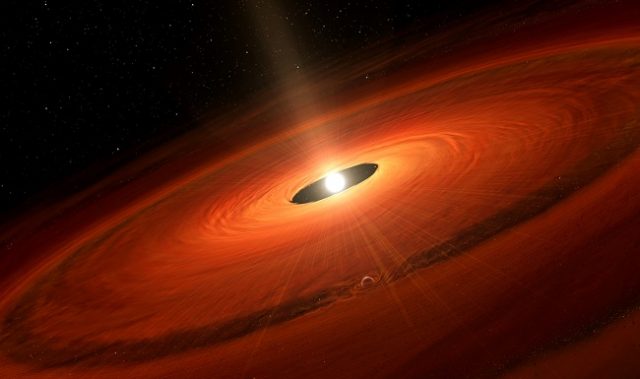
AsianScientist (Jun 18, 2014) – A team of scientists in Japan has detected, for the first time, radio emission from molecular gas in two galaxies hosting gamma ray bursts (GRBs), which are the brightest explosive phenomenon in the universe.
GRBs are flashes of gamma rays comprising an initial burst that are sometimes accompanied by a lengthier “afterglow” of lower electromagnetic frequency. They are thought to arise from the collapse of massive stars, and are accordingly expected to be found in the star-forming regions in galaxies containing large amounts of molecular gas. However, there has been no empirical evidence to support the theory.
To address the question of the composition of GRB regions, a research team led by Dr. Bunyo Hatsukade, Assistant Professor at the Chile Observatory of the National Astronomical Observatory of Japan, conducted observations of two galaxies hosting two GRBs: GRB 020819B and GRB 051022.
With the help of the Atacama Large Millimeter/submillimeter Array, the researchers detected radio emission from gases contained in both galaxies, in the process revealing an unexpectedly high proportion of dust to molecular gas quantities at the explosion site of the galaxy containing GRB 020819B. Their findings have been published in Nature.
The levels of dust in the outskirts of the galaxies studied were much higher than the star forming regions in the Milky Way and other nearby galaxies, suggesting that GRBs cause changes to their environment as they explode.
“We need to carry out further observations with other GRB hosts to see if this could be general environmental conditions of a GRB site,” said Assistant Professor Hatsukade.
The article can be found at: Hatsukade et al. (2014) Two γ-ray Bursts From Dusty Regions with Little Molecular Gas.
——
Source: Atacama Large Millimeter/submillimeter Array; Photo: National Astronomical Observatory of Japan.
Disclaimer: This article does not necessarily reflect the views of AsianScientist or its staff.












